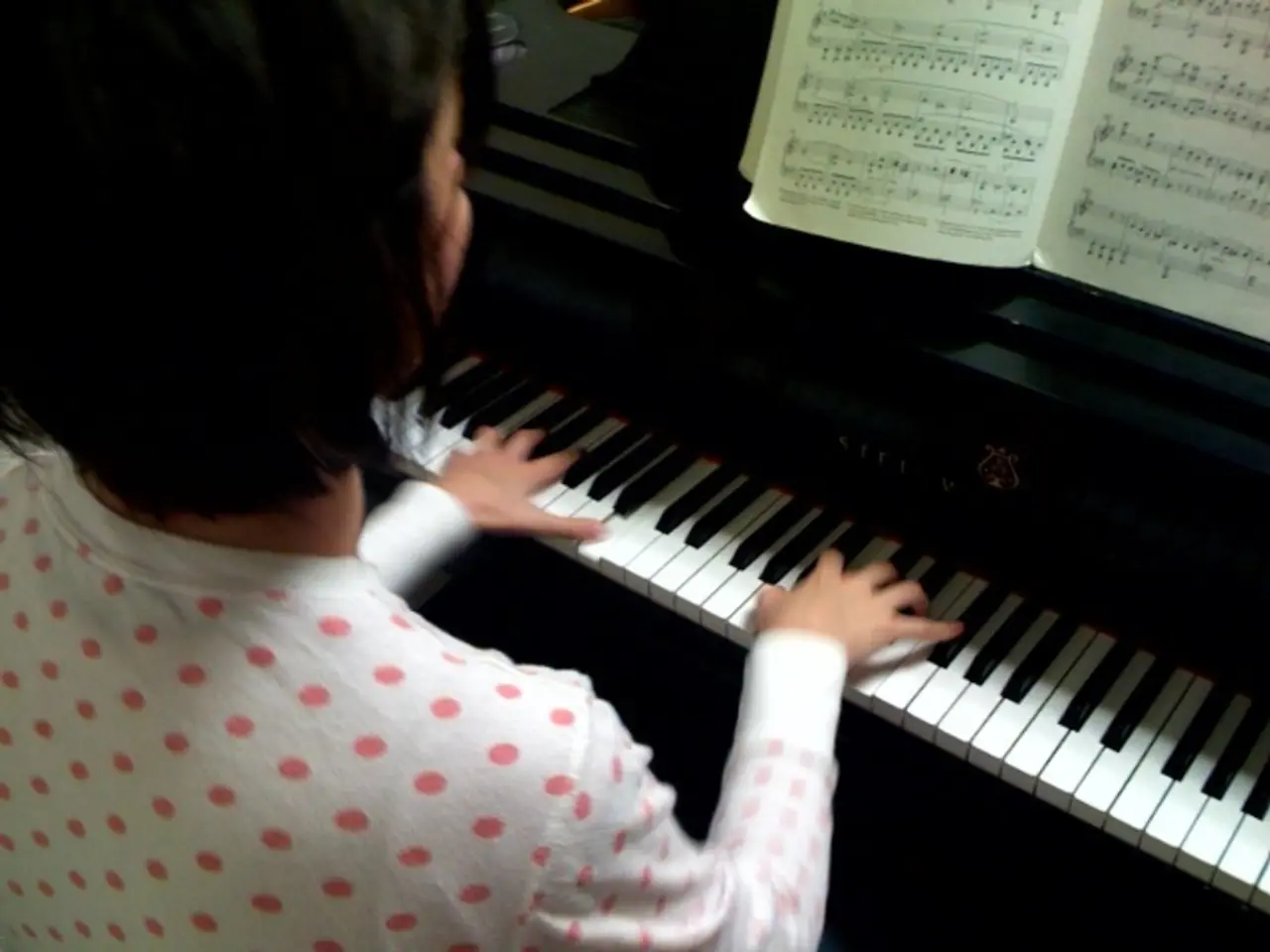Piano Learning: Advanced Sight Reading Drills for Aspiring Musicians
A solid understanding of music theory can significantly boost your sight-reading abilities, allowing you to anticipate what might come next in a score before even playing it. Here's a structured approach to improve your piano sight-reading skills.
Practice Techniques
Start slow and prioritize accuracy when beginning sight reading. Use tools or apps like MuseFlow that allow tempo adjustment and gradual speed increases, isolating and repeating difficult sections.
Mastering rhythm, the heartbeat of music, is foundational. Begin with rhythm practice alone, then integrate melodies. Customizable rhythm and melody training platforms can help build precision.
Regular scale practice improves familiarity with key signatures and fingerings, supporting faster reading of related musical passages.
Musical Pattern Recognition
Learn intervals and common patterns to reduce cognitive load and help anticipate forthcoming notes. Practice fingering strategies for confident, fluid navigation of notes and jumps.
Engage with continuously changing music material, like sight-reading games that avoid repetition, to train your brain to adapt quickly to new patterns, accelerating sight-reading growth.
Performance Practice
Play pieces at manageable tempos repeatedly to enhance automaticity. Incorporate sight reading into daily practice for better progress. Use a metronome and hands-separately practice to build independence and prevent reliance on one hand.
Consistent Practice and Progress
Allocate a specific part of your practice session for sight reading, incorporating new pieces or sight-reading books that progressively increase in difficulty. Practice sight reading a little bit every day for noticeable improvements over time.
The Benefits of Mastering Sight Reading
Mastering sight reading saves time, makes learning new pieces easier and faster, and makes playing the piano more fun and less frustrating. Understanding the composers and historical periods of the pieces you are playing can provide insights into the intended style and execution of the music, which can be particularly helpful when sight reading.
Regularly practicing scales and chords will make you more familiar with the keyboard layout and help you predict which notes are likely to follow in a piece based on its key signature.
Resources for Improving Sight Reading
WKMT offers exceptional piano lessons, available in-studio in London or online worldwide. Regularly engaging in music theory exercises, such as online courses, worksheets, or flashcards, can reinforce theoretical understanding and its application to sight reading.
Patience and Persistence
Improving sight reading might seem tough at first, but with the right approach, anyone can improve. Break down complex pieces into sections based on musical phrases or difficulty, focusing on mastering one segment at a time.
As your confidence and skills grow, gradually increase the difficulty of the pieces you practice with to prevent plateaus in your learning progress.
Real-World Practice Scenarios
Mimic real performance scenarios during practice sessions, such as playing in front of an audience or recording yourself, to get accustomed to the nerves and distractions that often accompany live performances.
Balancing Sight Reading with Other Musical Activities
Balance sight reading practice with other musical activities, like playing for fun, improvisation, and learning pieces by ear, to maintain a rounded musical education. Practicing sight reading in a performance-like setting can help you learn to manage anxiety and improve your concentration and accuracy under stress.
Starting with the Basics
Begin sight reading practice with easy pieces to build confidence and solidify basic skills without overwhelming yourself.
In summary, a structured approach blending slow, accuracy-focused practice, pattern recognition through interval and fingering mastery, and consistent performance routines—including rhythm mastery, scale practice, and interactive tools—optimizes piano sight-reading skill development.
- A solid understanding of music theory, provided through educational resources like online courses or worksheets, can aid in sight reading by helping predict forthcoming notes and enhancing visualization of what might come next in a score.
- Musical education platforms, such as MuseFlow and WKMT, offer tools and apps that facilitate sight reading practice, including tempo adjustment, gradual speed increases, and customizable rhythm and melody training.
- Incorporating a routine of sight reading practice into your education-and-self-development activities, like daily piano lessons, can lead to improved sight reading skills over time.
- Entertainment and personal enjoyment can be found in music, even when learning and improving sight reading skills, as understanding the composers and historical periods of pieces can reveal intended styles and executions, making the music more engaging and enjoyable.




